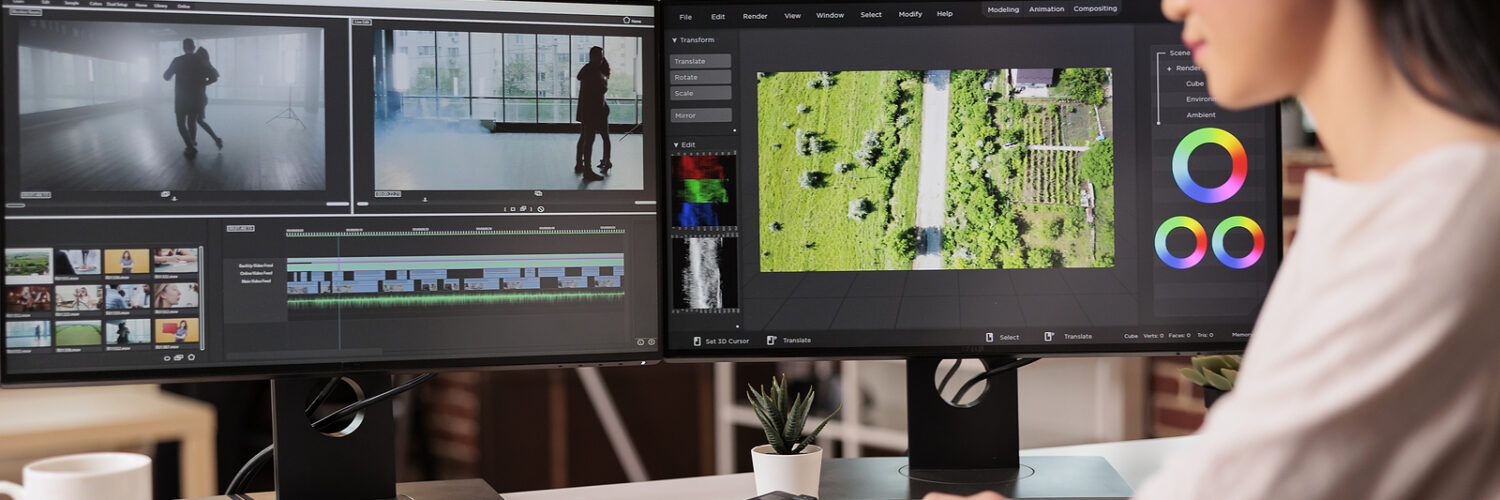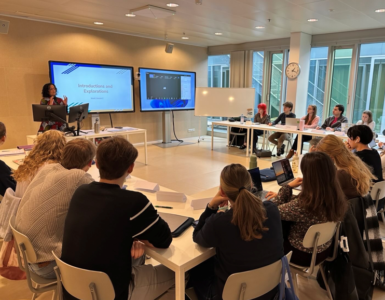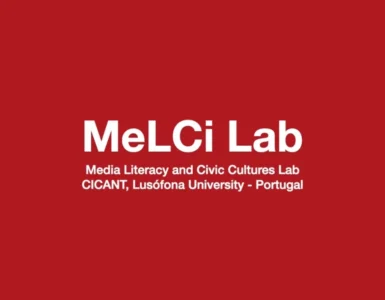by Matt Gilooly, University of Derby, UK.
What I appreciate about commercials is their ability to convey a wealth of information in just 30 seconds. Within that brief timeframe, they typically manage to establish the brand, communicate the intended message, and promote the product. This information tends to leave a lasting impression, often prompting us to hum a catchy jingle or visualize a particular character or slogan from these adverts that have a lasting impression while going about our daily lives.
Now, imagine if we applied the same principles used in crafting commercials to educational content. A few years ago, Wieden + Kennedy created a particularly remarkable advertisement for Honda, aptly called ‘Keep Up’, centered around pushing one’s limits and exploring one’s capabilities. This video was quite innovative for its time, featuring rapidly displayed text on the screen, revealing one word at a time, forcing you to engage, otherwise you miss out.
This advertisement combined superb music and sound design with striking visuals and elegant simplicity, making a lasting impact on the viewer. So, what if we harnessed these very design techniques and mindsets to enhance educational content? What would that entail? Would we replicate similar approaches or perhaps pioneer an entirely new genre of educational content that transcends traditional viewing methods?. Side note to reader, I acknowledge that the mentioned example isn’t crafted in a conventional commercial manner, distinct from what is typically observed in today’s mainstream media. However, this doesn’t imply that I am against creating content similar to the Samsung advert. Witty and clever storytelling certainly has a place within the educational context.
In my view, there exists a formula for efficiently conveying ideas, concepts, and theories through videos within the shortest possible duration. I wish it were as straightforward as maths, where 1+1 equals 2. In this scenario, imagine if every 30 seconds, one piece of information were reinforced visually using only primary colours, accompanied by a distinct sound to embed the information into your subconscious. I’ve longed for a simplified method, akin to a blueprint, that would enable anyone to teach through video effortlessly. However, reality proves it’s not as straightforward as I’d hoped. There is so much to consider with what seems an endless list of variables such as prior context of understanding before watching the video and not to assume that prior knowledge. An understanding of cognitive science and one’s ability to absorb this information is also key to understanding the potential of ‘high dose’ content.
While there is no shortage of ‘bite-sized’ content available, my quest is to deliver a substantial amount of information in a condensed timeframe, enabling the audience to engage in deeper learning rather than just skimming the surface.
I must emphasise that I don’t aim to diminish the joy of learning; many individuals relish watching lengthy documentaries on specific subjects as their pathway to profound understanding. I admire educational content from Vox , as they already excel in achieving what I aspire to accomplish, without long explanations. Here is a great example below.
So what if we were to combine both styles of videos and try to make a 1 minute or even a 30 second version of the Vox video using similar techniques to those seen in the Honda advert?
Analyzing Vox’s videos, they appear to excel at educating their audience through the artful integration of digital storytelling, stock footage, images, animations, and illustrations, all accompanied by whimsical music. The editing pace maintains a steady rhythm, avoiding any sense of haste, and the voiceover functions as a compelling narrative, enticing viewers to remain engaged. The enunciation follows a near-perfect cadence, guiding the audience through the content with finesse.
In contrast, the Honda advertisement opts for text displayed on screen instead of a voiceover. While this approach can foster viewer engagement, if we were to adopt a similar strategy for the Vox video, we must carefully assess its impact on the user experience. A direct replication might prove taxing and could potentially alienate some viewers. Therefore, a more deliberate, measured pace, coupled with concise language conveying essential information, may be necessary. Additionally, incorporating supplementary voiceover content simultaneously could offer a balanced approach, ensuring that our content remains as inclusive as possible.
Examining Vox’s use of imagery, it’s evident that they avoid overwhelming the viewer, opting for symbols and iconography that are easier to digest visually. While we can emulate this pace in line with the Honda advert, we must once again consider the audience’s experience. Would this brisk pace potentially confuse viewers, trigger epileptic episodes or eventually become tiresome? The key determinant of success in these videos lies in our ability to discern the optimal amount of information an individual can process from an image in rapid succession.
To achieve a harmonious blend of visual and auditory elements, it is imperative that the audience receives 100% of the information presented. Our selection of sound effects and music should not only be memorable but also aid in anchoring specific educational references in the viewer’s memory, ensuring a lasting impact beyond just auditory stimuli.
In this pursuit, we may very well commence a novel mode of communication, thereby defining a genre of educational content that could universally emerge as a cornerstone in future learning and teaching strategies.
In pursuit of my desired objectives, I have reservations about achieving them without duly considering the context in which this content will be used. Will it be intended for students to independently view at their leisure, or is it meant to be watched during group teaching sessions? The nature of the information, as well as its format before and after the video, are vital considerations in the content design process.
Indeed, these factors are paramount, and the concept of attention economy looms large in this endeavor. To chart our course from here, my initial inclination is to delve into research on techniques for efficiently imparting substantial amounts of information via video while taking into account the contextual nuances.
From my exploration, Cognitive sciences seems to have some of the answers. I have identified a range of techniques that could be applied within the video format. These encompass the use of visual aids, repetition, linking new information to previously acquired knowledge, maintaining clear organizational structures, and succinctly summarising the content.
It’s conceivable that merging all these techniques into a single video may present a formidable challenge. Yet, recalling the innovative Honda advertisement that dared to engage its audience in a unique manner, it was met with acclaim. Achieving our aims here would necessitate a meticulous blend of expertise encompassing content knowledge, psychology, video production, commercial storytelling, iconography, typography, graphic design, illustration, linguistics, and UX/UI design, among other disciplines.
The depth and complexity of these considerations might seem daunting, but the core message remains: it is imperative for educators and content creators alike to explore the untapped potential of such concise video content. It will not only increase engagement, but potentially speed up transferring knowledge for some subjects that previously may have taken a long time to learn.
To finish, here is another great video from Vox about ‘How to solve a problem like a designer’
We are delighted to have Matt as one of our speakers for Media & Learning 2024 – Back to the Future? on 20-21 June when he will be giving a presentation entitled “From Insight to Implementation: Adapting Video Production to Enhance User Engagement.

Author
Matt Gilooly, Learning Technology Media Advisor Digital Learning at University of Derby, UK.














